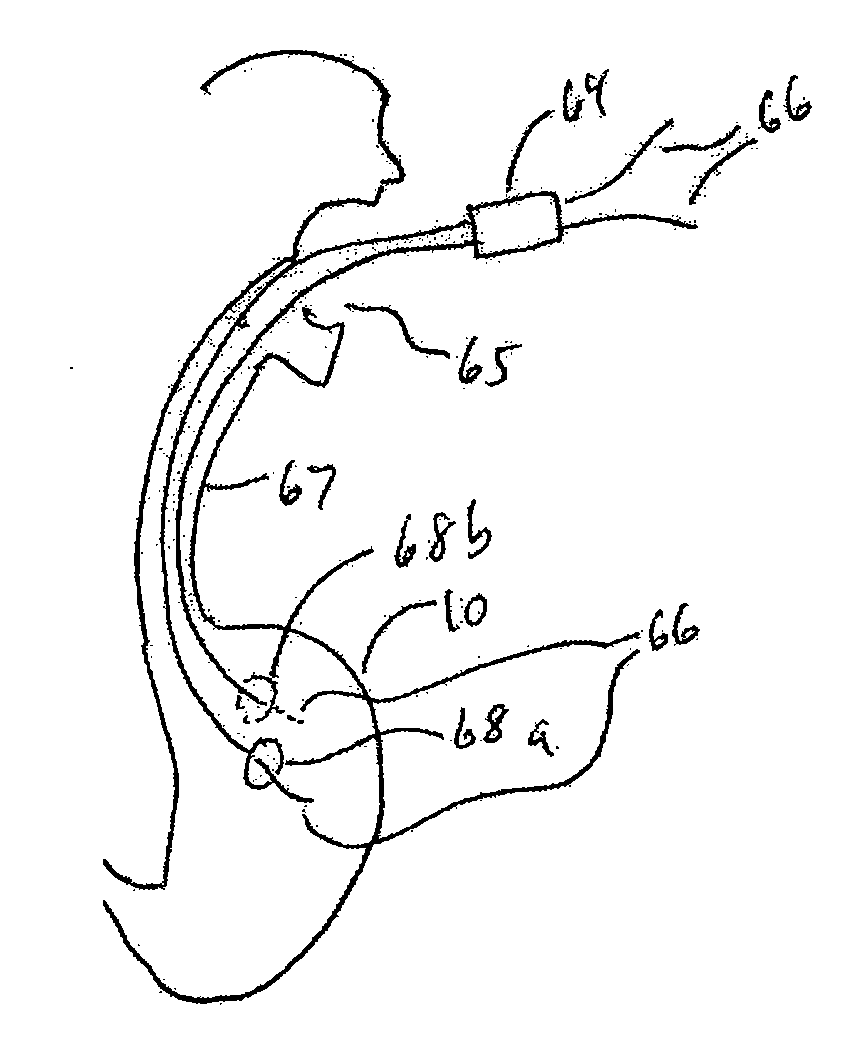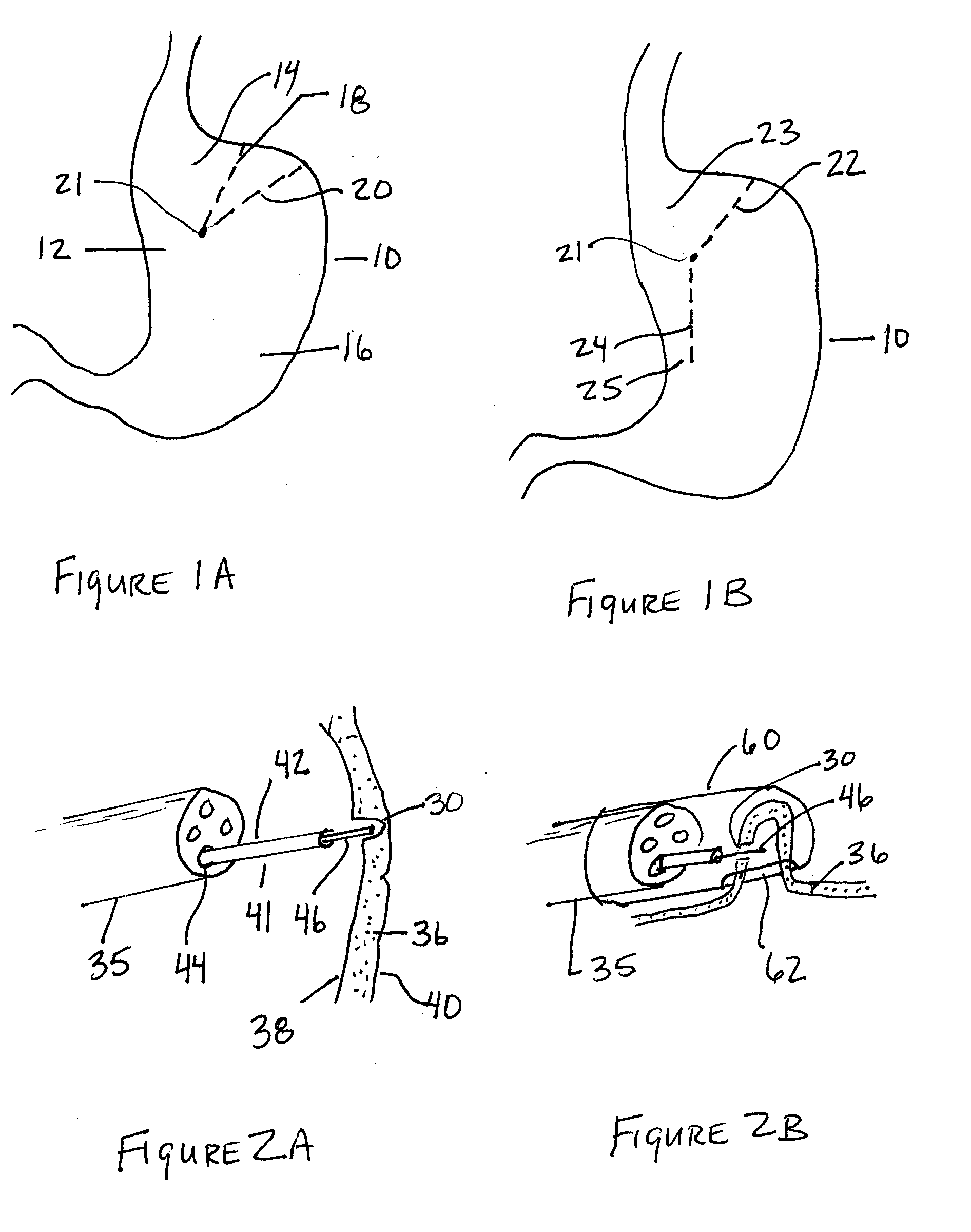Methods and Devices for Organ Partitioning
a technology for organs and partitions, applied in medical science, surgical staples, surgery, etc., can solve the problems of difficult placement of staples, t-tags, sutures or other fastening systems from inside the organ or cavity, and the endoscopic partitioning of organs through natural orifices is difficult, so as to achieve the effect of bringing the organ walls together
- Summary
- Abstract
- Description
- Claims
- Application Information
AI Technical Summary
Benefits of technology
Problems solved by technology
Method used
Image
Examples
Embodiment Construction
[0038]FIGS. 1-7 depict various embodiments of an organ partitioning device that may be used to secure walls of a hollow organ together in order to create compartments within the hollow organ or to reduce the volume of the organ. The described device may be delivered to the hollow organ with a number of methods including percutaneous, surgical and endoscopic means. Preferably the device is configured for delivery through a natural orifice of the body using flexible endoscopic means.
[0039]The device and method of the present invention may be applicable to many body organs, cavities, lumens or vessels and may be used to treat a wide variety of indications where a secure wall to wall requirement is present. The coupling of one wall of a body lumen to another may be useful in any number of disease states, treatment modalities and body sites. Although this invention and method may be illustrated in this description using the stomach, this is not meant to be limiting in any way. It is anti...
PUM
 Login to View More
Login to View More Abstract
Description
Claims
Application Information
 Login to View More
Login to View More - R&D
- Intellectual Property
- Life Sciences
- Materials
- Tech Scout
- Unparalleled Data Quality
- Higher Quality Content
- 60% Fewer Hallucinations
Browse by: Latest US Patents, China's latest patents, Technical Efficacy Thesaurus, Application Domain, Technology Topic, Popular Technical Reports.
© 2025 PatSnap. All rights reserved.Legal|Privacy policy|Modern Slavery Act Transparency Statement|Sitemap|About US| Contact US: help@patsnap.com



